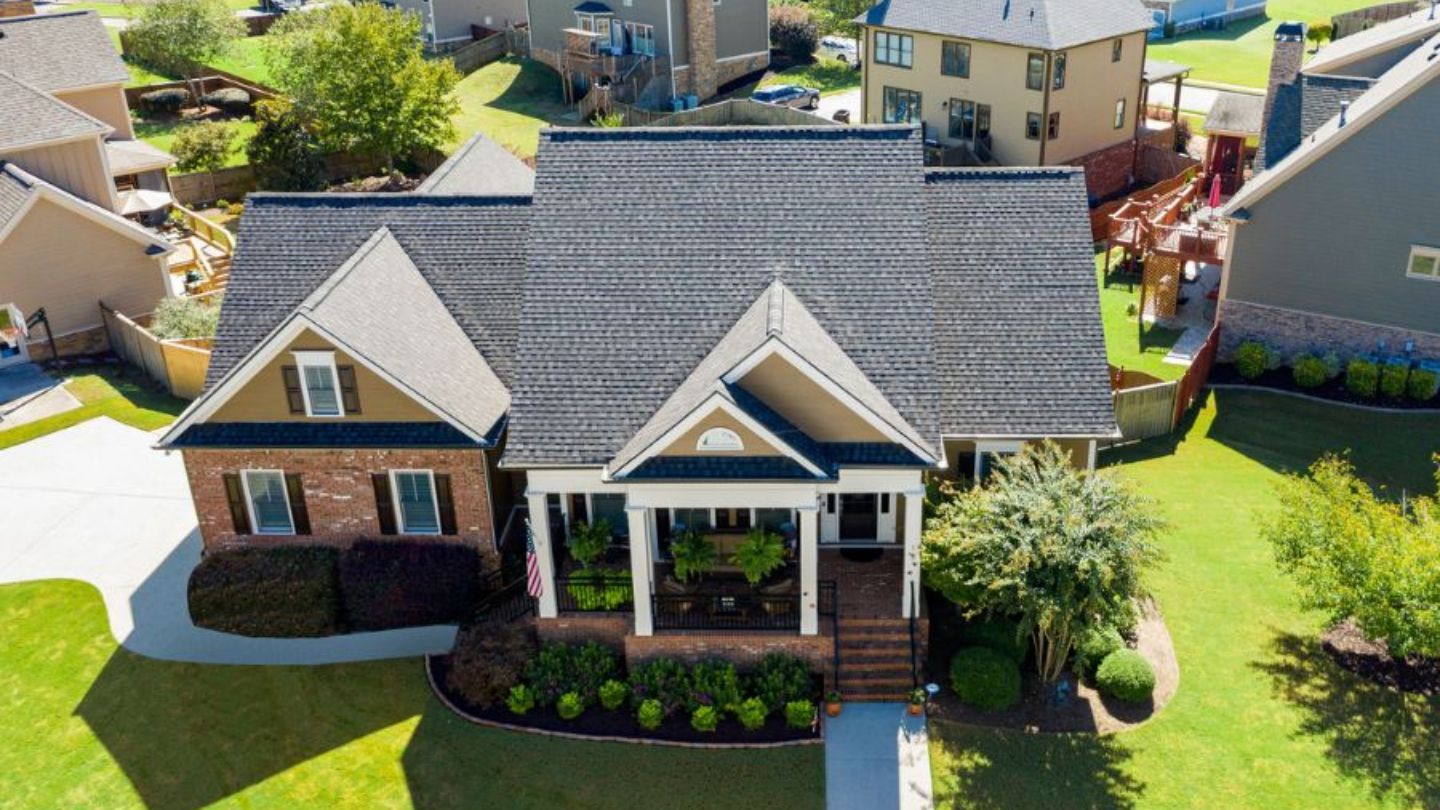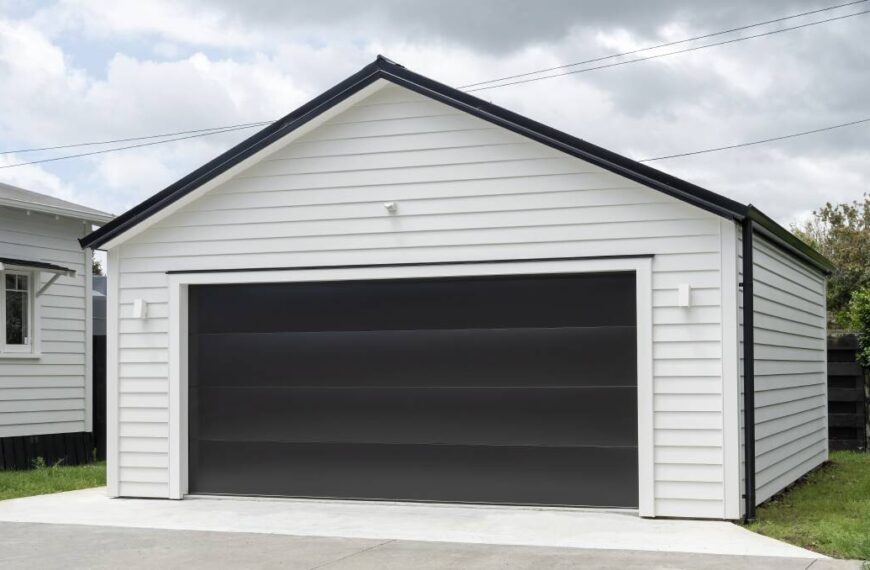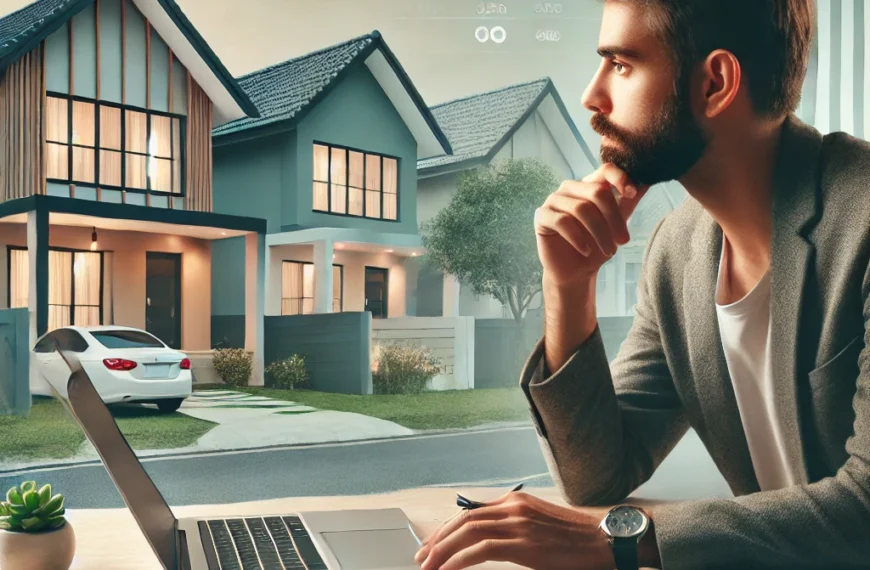A home is more than just a place to live; it’s an investment that grows and evolves with every improvement you make. Whether you’re planning to sell in the near future or simply want to enhance your living experience, making thoughtful home upgrades can significantly increase the market value of your property.
The value of a home isn’t solely dependent on location or size it’s also shaped by the features, functionality, and appeal it offers to potential buyers or appraisers. Home improvements, whether large-scale renovations or small, budget-friendly upgrades, play a crucial role in boosting this value.
While major projects like adding an extension or remodeling the kitchen can make a substantial impact, smaller, cost-effective changes should not be overlooked. Simple enhancements, such as updating fixtures or adding modern design elements, can stack up over time, contributing to a significant increase in value without breaking the bank.
What’s important is to focus on improvements that strike the right balance between functionality, aesthetics, and cost. By doing so, you not only create a more comfortable and appealing living space but also ensure that your efforts yield financial rewards down the line. In this article, we’ll explore various home improvement ideas that add the most value, helping you make informed decisions whether you’re upgrading for personal enjoyment or resale potential.
Heating Elements
Heating systems are an essential part of any home, and their role in maintaining comfort and functionality cannot be overstated. However, heating is not just about keeping warm; it’s also a key feature that can significantly enhance your home’s value. A well-designed and efficient heating system adds to the property’s overall appeal, especially in regions with cold climates where heating is a necessity for most of the year.
Types of Heating Elements
- Underfloor Heating
Underfloor heating is a modern, luxurious addition that many homeowners and buyers find appealing. This concealed heating solution distributes heat evenly across rooms, eliminating cold spots and freeing up wall space by removing the need for traditional radiators. It’s energy-efficient and works well with various flooring types, including tiles, wood, and even carpet.
While underfloor heating can require a significant initial investment, its long-term benefits, such as lower energy bills and increased property value, often make it a worthwhile upgrade. - Designer Radiators
Radiators have come a long way from being purely functional fixtures. Designer radiators combine practicality with style, turning what was once a basic heating element into an eye-catching feature. Available in various shapes, colors, and finishes, these radiators can complement any home decor while efficiently warming the space.
Whether you prefer sleek, minimalist designs or bold statement pieces, designer radiators offer a versatile way to add both warmth and aesthetic appeal to your home. - Heated Towel Rails
Heated towel rails are a popular choice for bathrooms and kitchens, offering a practical and stylish solution for keeping towels warm and dry. They are particularly useful in smaller homes where a full-sized radiator may be too bulky.
Available in a range of styles, from classic chrome to contemporary matte finishes, heated towel rails not only enhance comfort but also add a touch of sophistication to these spaces. - Niche Options Like Heating Trenches
For those looking to make the most of smaller spaces, niche heating solutions like heating trenches can be an excellent choice. Installed discreetly along the base of walls or in narrow hallways, these systems provide efficient heating without taking up valuable floor or wall space.
While less common, heating trenches are a unique and innovative way to enhance functionality in areas where conventional radiators might not fit.
Tips for Assessing and Upgrading Heating Systems
Before upgrading your heating system, it’s essential to evaluate your home’s current setup and identify areas for improvement. Here are some tips:
- Assess Efficiency: Check whether your current heating system is energy-efficient. Outdated systems may consume more energy and cost more in the long run.
- Consider Aesthetics: Choose heating elements that complement your home’s design while meeting your heating needs.
- Hire Professionals: For complex installations like underfloor heating or rewiring radiators, work with qualified professionals to ensure safety and functionality.
- Think Long-Term: Invest in systems that not only improve comfort now but also appeal to future buyers, boosting your home’s resale value.
By updating your heating system with modern, efficient, and stylish options, you can enhance your home’s comfort, functionality, and market appeal all at once.
Outdoor Enhancements: Adding a Patio
A patio is a timeless addition that seamlessly blends functionality and aesthetics in outdoor spaces. Whether your home boasts a sprawling backyard or a modest garden, a well-designed patio can elevate its appeal and add significant value. As an outdoor feature, patios provide an inviting area for relaxation, dining, and entertainment while enhancing the overall landscape design.
Benefits of Having a Patio
Adding a patio offers numerous advantages:
- Aesthetic Appeal: A patio creates a polished, organized look for your outdoor area, adding visual interest and structure. It serves as a transition between indoor and outdoor spaces, enhancing the overall harmony of your home.
- Increased Functionality: Patios offer a dedicated space for activities like outdoor dining, lounging, or hosting gatherings, making your garden more usable and enjoyable.
- Boosted Property Value: Homes with patios are often more attractive to buyers, as they provide an extended living space without significant additional construction.
Common Misconceptions About Patio Design
Many homeowners hesitate to add a patio, believing it requires extensive space or costly materials. However, these misconceptions shouldn’t deter you:
- “Patios must be large to be effective.” A patio doesn’t have to dominate your garden. Even a small, well-placed patio can add charm and utility to your outdoor space.
- “Patios are expensive to build.” While some materials like natural stone can be pricey, there are budget-friendly options such as concrete pavers or gravel that still look stunning.
- “Patios require constant maintenance.” Modern materials and sealants make patios relatively easy to maintain, requiring only periodic cleaning and minor upkeep.
Ideas for Patio Styles
- Space-Saving, Elegant Designs
For smaller gardens, opt for compact, minimalistic patio layouts. Circular or semi-circular designs work well in tight spaces, creating cozy nooks for a table and chairs without overwhelming the area. Incorporating plants along the edges can soften the look and add a touch of greenery. - Patios as Dining or Leisure Spaces
Transform your patio into an outdoor dining area by adding a table, chairs, and perhaps a built-in barbecue or firepit. For leisure, include lounge furniture, string lights, or a pergola for shade, creating a comfortable and inviting atmosphere. - Practical Uses for Patios in Gardens of Varying Sizes
- Small Gardens: A raised patio can serve as a step from the home to the garden, creating a seamless transition and adding depth.
- Medium-Sized Gardens: Incorporate multifunctional features like built-in benches or planters to maximize space and utility.
- Large Gardens: Use a patio to define separate zones for dining, lounging, or gardening. Expansive patios can include layered designs or paths connecting different areas.
By tailoring the design to fit your space and preferences, a patio can become a versatile extension of your home, adding both beauty and practicality. This outdoor enhancement not only enriches your day-to-day living but also makes your property more appealing to potential buyers.
Electrical Upgrades: Rewiring Your Home
Upgrading your home’s electrical system is one of the most impactful improvements you can make. Modern wiring not only ensures safety but also enhances the functionality and resale value of your property. As technology continues to evolve, potential buyers and homeowners increasingly prioritize up-to-date electrical systems for their convenience and peace of mind.
Importance of Up-to-Date Electrical Systems
Electrical systems are the backbone of any home, powering everything from lights to appliances. Outdated wiring can pose serious safety risks, such as electrical fires or shocks, and can struggle to meet the demands of today’s technology-driven households. An updated system ensures:
- Safety: Proper wiring reduces the risk of hazards caused by faulty or overloaded circuits.
- Compliance: Modern wiring meets current electrical codes, which is crucial for passing inspections during a sale.
- Functionality: Updated systems can handle the power needs of modern appliances, smart home devices, and entertainment systems without tripping breakers.
How to Identify Outdated Wiring
If your home hasn’t been rewired in decades, it’s time for an inspection. Common signs of outdated wiring include:
- Old Fuse Boxes and Meters: Older fuse boxes with screw-in fuses or outdated meters may indicate that the wiring hasn’t been updated.
- Frequent Circuit Breaker Trips: Regularly overloaded circuits could signal insufficient capacity.
- Two-Prong Outlets: These ungrounded outlets are less safe and indicate old wiring.
- Visible Wear and Tear: Frayed wires, discolored outlets, or outdated materials like cloth-covered wiring can point to an aging system.
Benefits of Rewiring
- Enhanced Safety
Rewiring eliminates risks associated with aging or damaged electrical systems. New wiring ensures proper grounding, reduces the chance of electrical fires, and supports the safe operation of high-demand appliances. - Modern Technology Appeal
A rewired home is ready to accommodate modern needs, including smart home setups, energy-efficient lighting, and high-powered electronics. Buyers are often willing to pay a premium for a home equipped with state-of-the-art electrical systems. - Value Impact for Resale
Real estate agents frequently highlight updated wiring as a selling point, as it reassures buyers of the home’s safety and readiness for the future. A rewired home is perceived as move-in ready, which can shorten time on the market and attract higher offers.
Investing in a complete rewire is a project that pays off in multiple ways. While the upfront cost may seem significant, the long-term benefits of safety, convenience, and increased property value make it a worthwhile endeavor. Before embarking on the upgrade, consult a licensed electrician to assess your home’s current wiring and provide tailored recommendations. This ensures you make informed decisions that enhance both the functionality and appeal of your home.
Plumbing Improvements
Modern plumbing systems play a vital role in the overall functionality, safety, and value of a home. Outdated or poorly maintained plumbing can lead to serious issues, ranging from water damage to health hazards. Upgrading your plumbing not only ensures a smoother, safer water supply but also adds significant appeal to your property for potential buyers.
The Significance of Modern Plumbing
Plumbing systems are among the most used features in any home, delivering clean water for cooking, bathing, and cleaning while efficiently removing waste. However, old plumbing materials and outdated installations can diminish the system’s reliability and safety. Modern plumbing upgrades:
- Improve Efficiency: New systems often conserve water, reducing utility bills and environmental impact.
- Boost Home Value: Buyers appreciate homes with up-to-date plumbing that requires minimal future maintenance.
- Enhance Daily Comfort: Consistent water pressure and clean, safe water are essential for comfortable living.
Addressing Safety Concerns with Old Piping Materials
One of the most critical reasons to update plumbing is to eliminate hazardous materials like lead pipes, which were commonly used in older homes. Lead exposure through drinking water can pose severe health risks, particularly for children and pregnant women. Even if your pipes aren’t lead-based, aging materials such as galvanized steel can corrode over time, releasing harmful particles and reducing water quality.
Identifying and replacing these materials is essential for:
- Protecting Health: Safe, modern materials like copper or PEX piping ensure clean water free from contaminants.
- Maintaining Structural Integrity: Older pipes are more prone to leaks or bursts, which can lead to costly water damage.
Benefits of New Plumbing
- Reduced Risk of Leaks and Water Damage
Aging pipes are more susceptible to wear and tear, increasing the likelihood of leaks, bursts, and water damage. Upgrading your plumbing mitigates these risks, saving you money on repairs and protecting your home’s structural integrity. - Long-Term Health and Safety Advantages
New plumbing materials eliminate potential contaminants in your water supply, providing peace of mind and a healthier living environment. In addition, updated systems are less prone to backups or blockages, reducing the chances of water-related accidents or hygiene issues. - Energy and Water Efficiency
Many modern plumbing systems are designed with efficiency in mind. For instance, water-saving fixtures and insulated pipes reduce wastage and improve energy savings, benefiting both your wallet and the environment.
Upgrading your home’s plumbing is a smart investment with immediate and long-term benefits. By addressing safety concerns, minimizing water damage risks, and ensuring reliable performance, modern plumbing systems enhance your home’s value and livability. Whether you’re planning to sell soon or stay for years, a plumbing update is an improvement worth considering. Always consult licensed professionals to assess your current system and recommend the most suitable upgrades.
Read more: Equity Release: How Is It Regulated?
Final Thoughts
Enhancing your home’s value doesn’t always require major renovations or breaking the bank. Thoughtful and strategic home improvements ranging from upgrading heating systems and adding a patio to rewiring your electrical setup and modernizing plumbing can significantly boost both the functionality and market appeal of your property.
The key to successful value-adding improvements lies in understanding the balance between cost, practicality, and the long-term benefits they provide. Small upgrades, like installing a stylish radiator or creating a cozy patio space, can deliver substantial aesthetic and functional rewards. Meanwhile, critical updates, such as rewiring and plumbing, ensure the safety and longevity of your home while increasing its appeal to potential buyers.
Whether your goal is to enhance your living experience or prepare your home for resale, focusing on high-impact areas like heating, outdoor spaces, electrical systems, and plumbing will yield the best results. Always prioritize quality and consult professionals to ensure the changes are done correctly and effectively.
With the right approach, every improvement you make becomes a step toward a more valuable, efficient, and enjoyable home. Start small, plan strategically, and watch your efforts transform your space into an asset that stands out in the market.

















